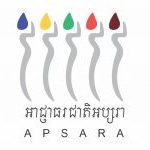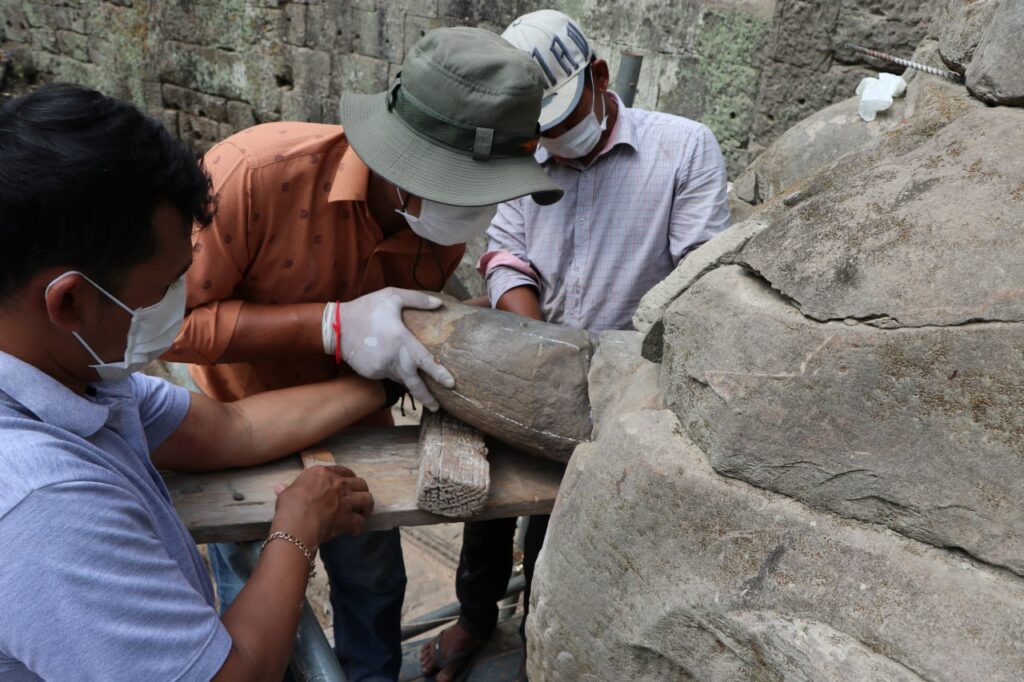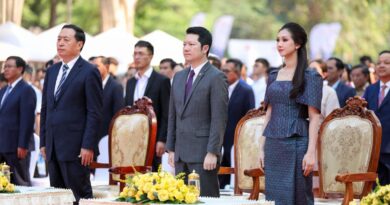ក្រុមការងារបច្ចេកទេសជួសជុល និងអភិរក្សថ្មនៃអាជ្ញាធរជាតិអប្សរា បានតភ្ជាប់ភ្លុកដំរីចំនួនមួយទៅក្បាលដំរីកណ្តាលផ្នែកខាងស្តាំរបស់ដំរីក្បាលបីនៅជ្រុងអគ្នេយ៍នៃខ្លោងទ្វារតាកាវ។ ការភ្ជាប់នេះ បានធ្វើឡើងបន្ទាប់ពីក្រុមការងារធ្វើកំណាយរកឃើញភ្លុកដំរី។
លោក មុំ សុផុន មន្ត្រីបច្ចេកទេសជួសជុលនិងអភិរក្សថ្ម បានលើកឡើងថាក្រុមការងារបានកំណាយសម្អាតកំណកដីនៅបរិវេណជុំវិញខ្លោងទ្វារតាកាវបានរកឃើញបំណែកភ្លុកដំរីចំនួន២ ទី១ស្ថិតនៅជ្រុងដំរីក្បាលទិសអាគ្នេយ៍ និងទី២បានឃើញនៅជ្រុងដំរីក្បាលបីទិសនិរតី។ ក្នុងចំណោមភ្លុកដំរីទាំង២ មានតែមួយប៉ុណ្ណោះដែលមានរូបរាងពេញលេញ និងរកឃើញទីតាំងដើម គឺនៅក្បាលដំរីកណ្តាលផ្នែកខាងស្តាំ ជ្រុងអាគ្នេយ៍របស់ខ្លោងទ្វារ ដែលមានបណ្តោយ ៤៤សង់ទីម៉ែត្រ ទទឹង ២៣សង់ទីម៉ែត្រ កម្រាស់ ២០សង់ទីម៉ែត្រ។ ចំណែក បំណែកភ្លុកដំរីទី២ បាក់ផ្នែកកណ្តាលមិនមានរូបរាងពេញអាចសម្គាល់ថា នៅទីតាំងណាមួយនៃដំរីក្បាលបីទាំងនោះបានឡើយ។
មន្ត្រីបច្ចេកទេសរូបនេះ ឱ្យដឹងទៀតថា ការតភ្ជាប់បំណែកភ្លុកដំរីទៅទីតាំងដើម គឺក្នុងគោលបំណង ដើម្បីបង្ហាញឱ្យសាធារណជន ភ្ញៀវទេសចរជាតិ-អន្តរជាតិ បានឃើញនូវរូបរាងពេញលេញរបស់ដំរីដែលដូនតាខ្មែរយើងបានឆ្លាក់ គឺមានភ្លុកក្នុងទម្រង់បែបណា និងជាពិសេសលើកតម្លៃប្រវត្តិសិល្បៈ ដែលដូនតាបានបន្សល់ទុកឱ្យ គឺមិនបាត់សាបសូន្យទាំងស្រុងនោះទេ។
ក្នុងនាមជាអ្នកជួសជុល និងអភិរក្សថ្មមួយរូប លោក មុំ សុផុន គិតថា នេះជាការល្អណាស់ដែលភ្លុកដំរីដែលបានបាក់កប់ទៅក្នុងដីជាយូរឆ្នាំមកហើយ ត្រូវបានរកឃើញមកវិញ។ មិនត្រឹមតែប៉ុណ្ណោះ យើងក៏បានរកឃើញទីតាំងដើមវិញ ហើយសាធារណជនអាចមកទស្សនាស្វែងយល់បាន នៅខ្លោងទ្វារតាកាវជ្រុងអាគ្នេយ៍ ព្រោះចម្លាក់ដំរីក្បាលបីដែលមានភ្លុកពេញលេញ កម្រឃើញមាននៅសេសសល់តាមខ្លោងទ្វារចេញចូលក្រុងអង្គរធំទាំង៥៕
អត្ថបទ៖ ឆាយ ផាន់នី
រូបភាព៖ លោក យី សុថា
The APSARA National Authority’s stone restoration and conservation team has connected the piece of ivory stone to the middle head of the three-headed elephant sculpture at the southeast corner of the Takav Gate. The connection was made after the excavation team found this ivory.
Mr. Mom Sophon, Technical Officer for Stone Restoration and Conservation said that the team excavated and cleared the area around Takav Gate and found two pieces of ivory stone, the first one was at the corner of the elephant’s head and the second one was found at the corner of the elephant head. Among the two pieces of ivory stone, the only one that is fully formed and found in its original location is at the head of the middle head of the three-headed elephant sculpture at the southeast corner of the gate, which is 44 cm long, 23 cm wide, and 20 cm thick. The second piece of ivory stone is not fully formed and cannot be identified at any location of the three-headed elephants.
The technical official said that the connection of the ivory piece to the original location was to show the public, national and international tourists see the full shape of the three-headed elephant sculpture that Khmer ancestors carved, what kind of ivory, and In particular, the value of the art history that Khmer ancestors left behind was not completely lost.
Mr. Sophon added that it was good that ivory, which has been buried in the ground for many years, has been found. Not only that, but we also found the original location, and the public could visit and explore the southeast corner of the Takav Gate because we rarely saw the three-headed elephant sculpture’s full shape of ivory stone at the five gates of Angkor Thom.
Article: Chhay Phanny
Photos: Mr. Yi Sotha





